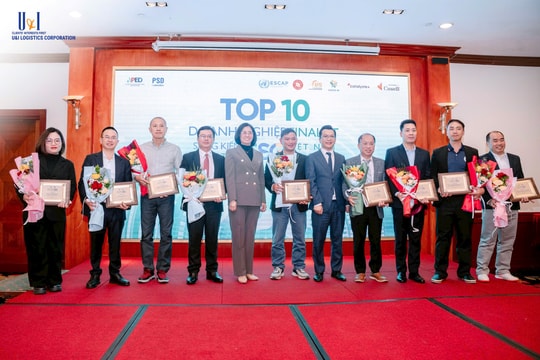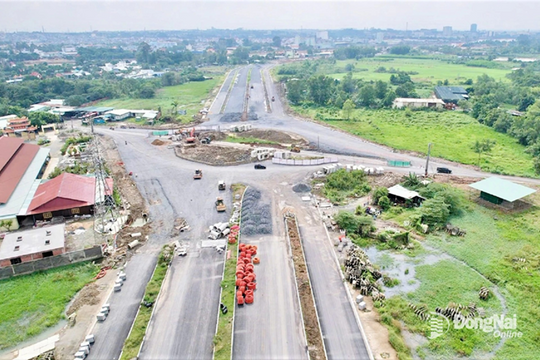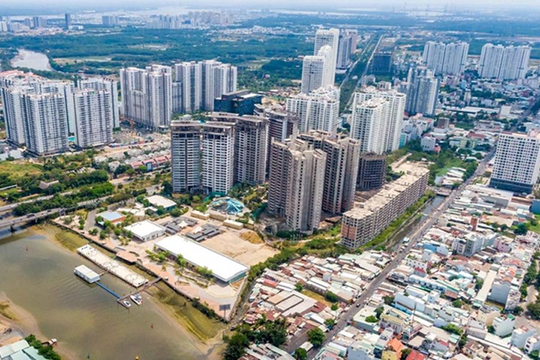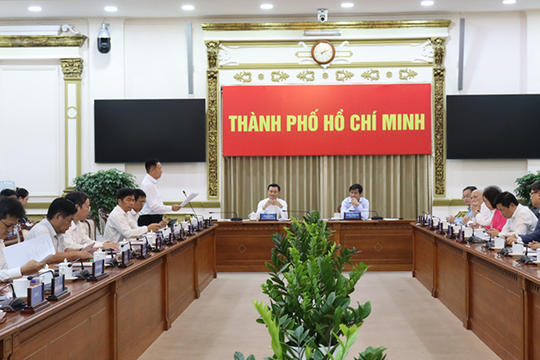Expectations for an International Transshipment Hub
According to the Master Plan for the Development of Vietnam's Seaport System for the period 2021-2030, with a vision to 2050, which was approved by the Prime Minister in Decision No. 1579/QĐ-TTg, the Ba Ria - Vung Tau (BRVT) seaport system is classified as a special port group. It functions as a gateway port and an international transshipment hub, with container terminals, general cargo terminals, bulk cargo terminals, liquid/gas cargo terminals, and the capacity to accommodate ships of up to 250,000 tons.
On May 22, 2024, the Prime Minister issued Decision 442/QĐ-TTg approving the adjustment of the master plan for the development of Vietnam's seaport system for the period 2021-2030, with a vision to 2050. According to this adjustment, CMTV is prioritized for the development of port clusters within Seaport Group 4, which includes the seaports of Ho Chi Minh City, Dong Nai, BRVT, Binh Duong, and Long An. The target by 2030 is to handle 500 to 564 million tons of goods (including 29 to 33 million TEUs of container cargo, excluding international transshipment cargo), and 2.8 to 3.1 million passengers.
.png)
.png)
CMTV is currently one of 19 ports worldwide capable of receiving ships of up to 250,000 tons and is among the top 50 ports globally in terms of container throughput. Additionally, CMTV is located near international shipping lanes. The costs for loading, unloading, and transshipment are among the lowest in the region, while the infrastructure, technology, and loading/unloading productivity are on par with the regional standards.
According to many port operation experts, CMTV currently has the necessary conditions to become an international transshipment port. Specifically, in the near future, the port could have up to 3.5 kilometers of quayside for cargo handling once the terminals are completed. Currently, the port can already accommodate the largest ships in the world.
"The facilities and infrastructure of CMTV are basically adequate, and if additional terminals are invested in the future, it would be an excellent condition for cargo transshipment. However, if things remain as they are now, it will only function as a gateway port. The key is to attract shipping lines and ensure that they identify this port cluster as a transshipment hub," said Pham Anh Tuan, CEO of Portcoast Consultant Corporation. He also analyzed that to establish an international transshipment port, both necessary and sufficient conditions must be met.
The necessary conditions include geographical location and infrastructure, such as the scale of the terminals and quays, to allow mother ships to dock and handle cargo. The sufficient condition is the support of at least one or two of the world's leading shipping lines. Additionally, it is crucial to have a hinterland with an existing source of import-export goods.
.png)
.png)
Continued Investment and Development Needed
Despite acknowledging the many advantages and opportunities of the port cluster, many port operators and shipping companies believe that more mechanisms and policies are needed to resolve lingering issues. In reality, the ports in the area are fragmented, with insufficient quay length, and the piers are not well connected. Additionally, there is a lack of interconnectivity between small and large vessels.
Moreover, there is an absence of an on-site specialized inspection organization, a lack of a logistics ecosystem, and insufficient multimodal regional transportation connections. This leads to high logistics costs and prolonged customs clearance times. Transitioning from a gateway port to an international transshipment port is a significant step forward. According to maritime experts, for CMTV to become an international transshipment port, it needs a legal framework that includes breakthrough mechanisms and policies.
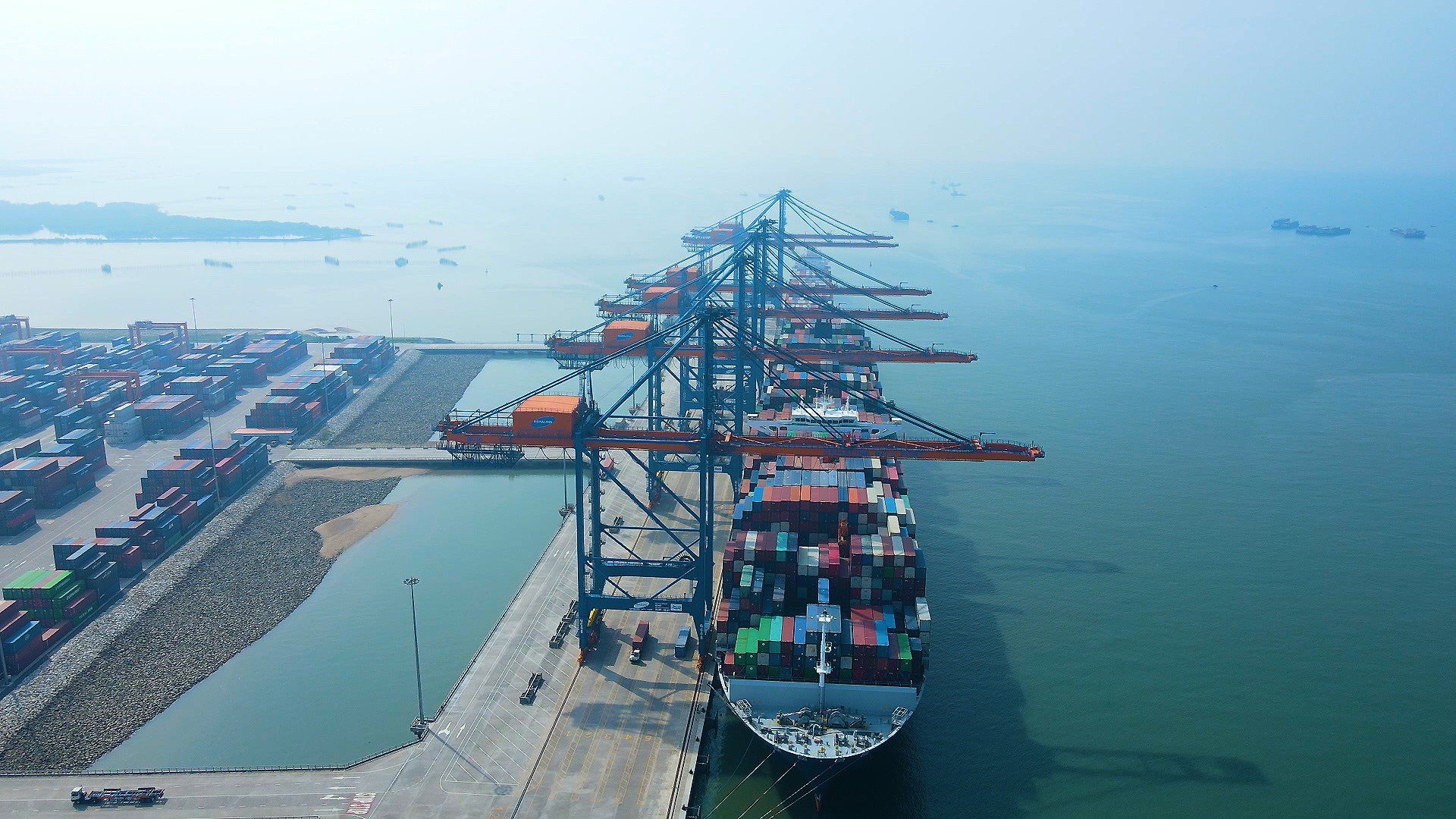
Accordingly, it is necessary to continue removing policy and procedural barriers to facilitate cargo transshipment at the port cluster. At the same time, the most favorable conditions should be created for customs clearance, simplifying procedures, reducing time, and lowering clearance costs. Furthermore, pilot implementation of transshipment functions, such as a free trade port area, and investment in infrastructure, especially regular dredging to maintain adequate depth for ships, are also needed.
Some businesses note that a current weakness is that transshipment volumes remain low, accounting for less than 10%, and there is a lack of connection between terminals. Under current regulations, to transfer cargo between ports, companies must complete several procedures, such as filing independent transportation declarations and sealing customs for containers with goods.
Some companies believe that inflexible procedures result in long cargo handling times, potentially leading to the risk of missing ship connections. When port transfer productivity is low, shipping lines may be hesitant to increase transshipment volumes at Cai Mep.
Currently, transshipment volumes from Cambodia are around 300,000 TEUs per year, accounting for about 70% of the total international transshipment volume at Cai Mep and are on the rise. However, port transfers for imports and transshipment goods from Cambodia that are transshipped at Cai Mep are not allowed.
.png)
.png)
Despite these achievements, the BRVT port system, including the CMTV port cluster, still has some "bottlenecks" that need to be addressed, such as transport infrastructure, specialized inspections, the logistics service ecosystem, and breakthrough policy mechanisms.
The reality shows that the Cai Mep container port cluster comprises six interspersed seaports, with a total quay length of about 5,470 meters, averaging about 600 meters per berth. Except for TCTT and CMIT terminals, which are jointly operated, the remaining container terminals operate independently (both in location and operation) with 12 separate gates for customs inspection and monitoring.
According to some economic experts, the division among the ports leads to short and small quay lengths, usually accommodating only one large vessel at a time, reducing the port's operational efficiency. This is a limitation of the CMTV port cluster. Therefore, policies must be in place to link and merge the terminals to achieve larger scale and further enhance the port's advantages.
To promote the flow of import-export goods through the CMTV port cluster, comprehensive reforms are needed in various areas, including port development planning, transportation, modernization, digitization, automation in port management and operations, development of maritime logistics services, customs procedures, tax policies, and appropriate fees.
.png)
.png)


.png)
.png)
.png)
.png)
.png)
.png)


.png)
.png)



